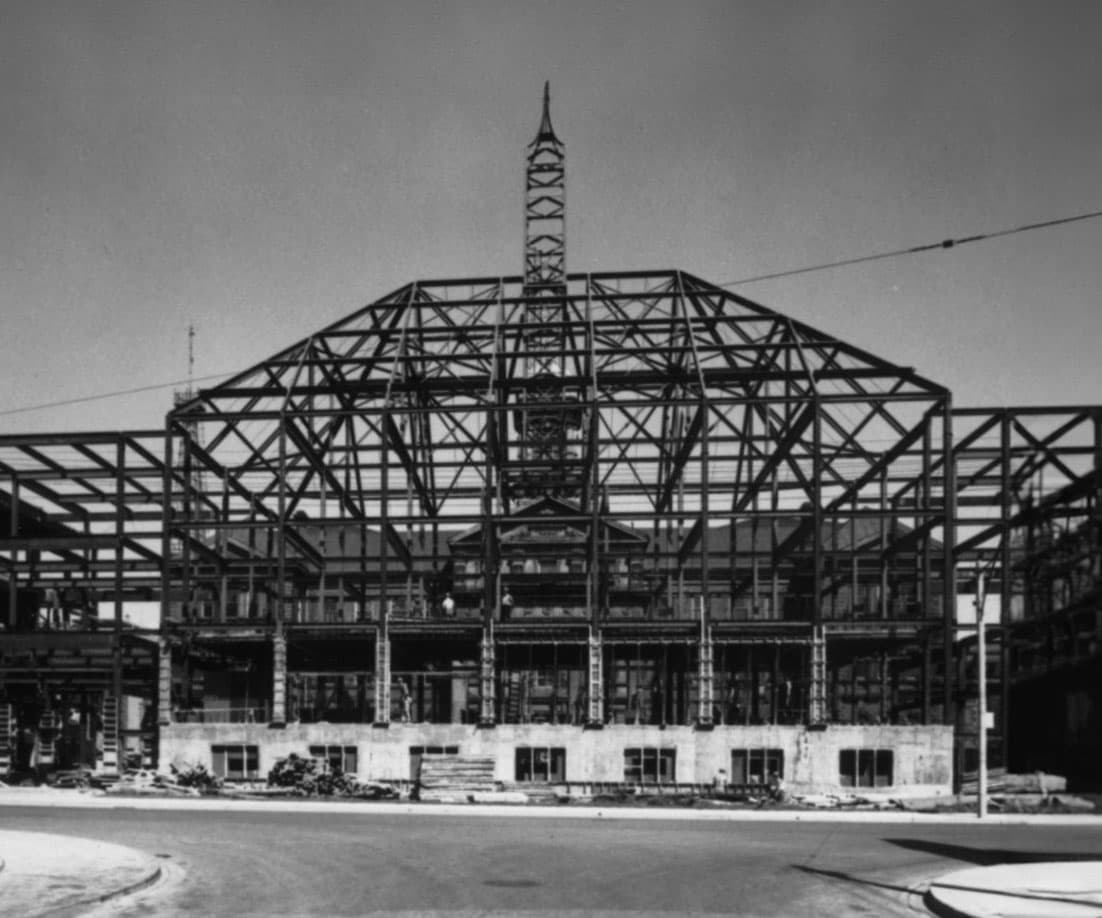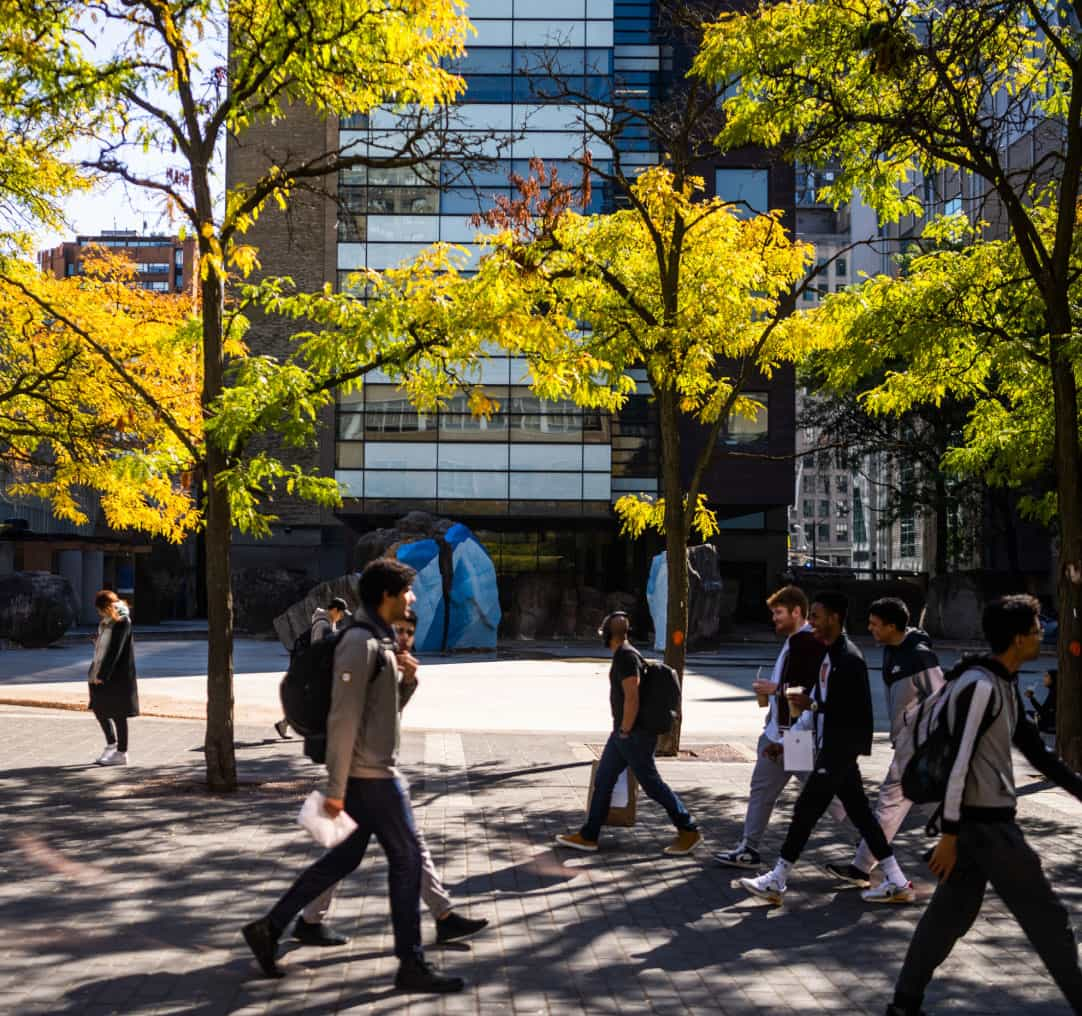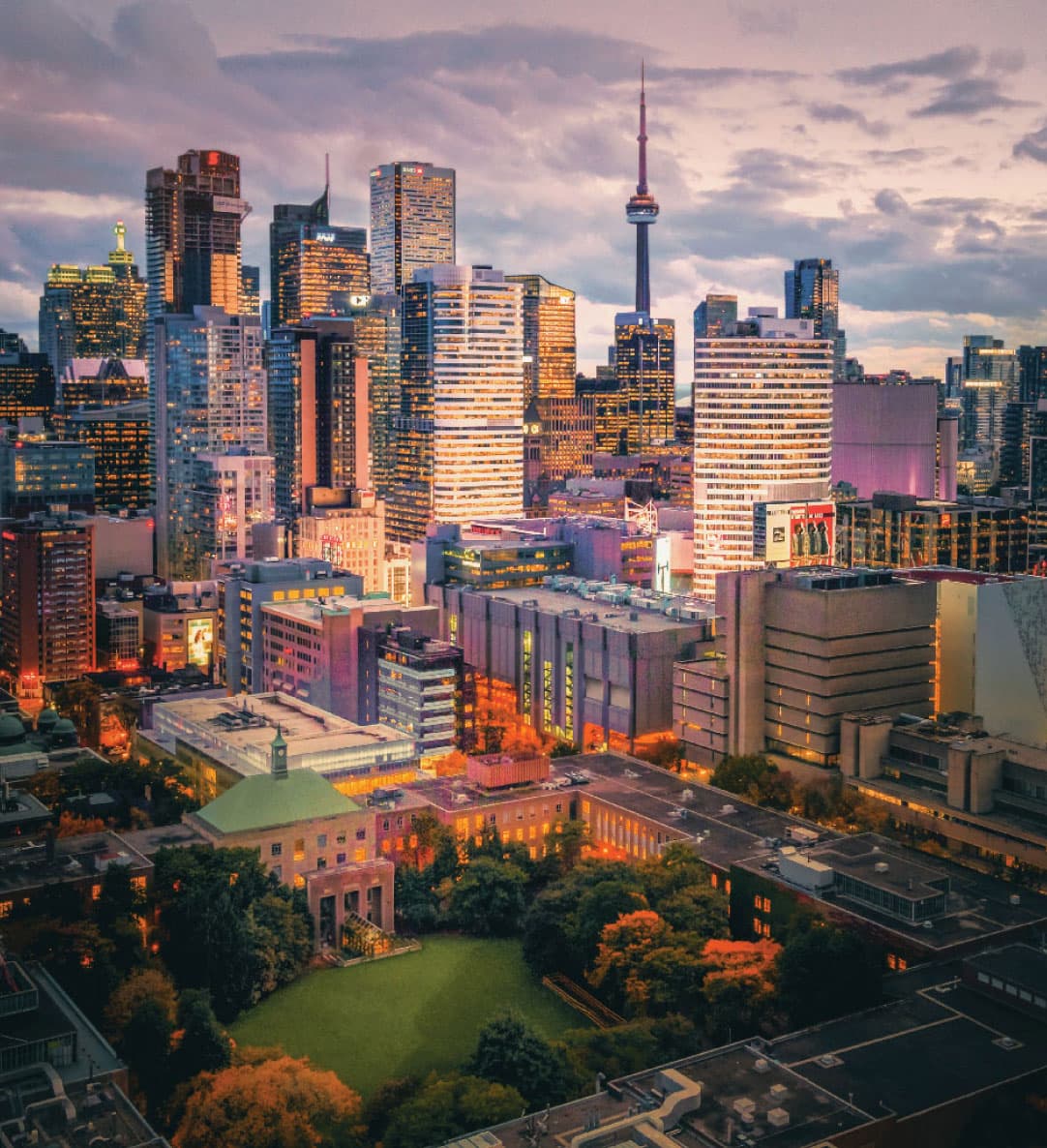History

Through the years
Over 75 years ago, the university opened its doors with the mission to provide innovative career-focused learning to meet the needs of our ever-changing world. Starting with just 225 students and a few trade courses, the institution now offers more than 100 undergraduate and graduate programs to 48,000 students and boasts over 245,000 alumni worldwide.

Pictured: Electronics students broadcast the first live television show in Canada for a general audience, 1949. Courtesy of the University Archives.
1940 – 1960: The early years
In 1948, the Ryerson Institute of Technology was founded on the site of Ontario’s first teacher training college, the Toronto Normal School, to address post-war demands for skilled tradespeople. The institute initially focused on training in skilled trades such as architecture, costume design, and photography. It also launched The Ryersonian, the student newspaper now known as On the Record (external link) .
1960 – 1980: A time of growth
In 1963, the institution embraced its expanding identity and adopted the name Ryerson Polytechnic Institute, marking the beginning of a new era. By 1971, it had gained degree-granting authority, reflecting its expanding academic scope. The 1970s saw further development with the construction of Lake Devo in 1979, highlighting the institution’s growing student body and infrastructure. During this period, enrolment surpassed 10,000 students annually, and the introduction of the Energy Centre and radio-delivered courses signaled its evolution as a leader in innovative learning.

Pictured: Construction of Kerr Hall, early 1960s. (C) Herb Knott Photography. Courtesy of the University Archives.

1980 – 2000: Official university status
In the early 1990s, the institution’s status soared with many major milestones, including obtaining official university status in 1993. The next few years saw the introduction of graduate and doctoral programs and the launch of the G. Raymond Chang School of Continuing Education. This momentum continued, and by 2002, Ryerson Polytechnic University had become Ryerson University, underscoring its growing stature and commitment to robust academic offerings.
2000 – 2020: City Building and Zone Learning
The university’s location in downtown Toronto led to numerous partnerships and the development of landmark facilities. This time saw the opening of the Mattamy Athletic Centre (external link) at the historic Maple Leaf Gardens, the award-winning Student Learning Centre on Yonge Street, The Image Centre (external link) , and the Daphne Cockwell Health Sciences Complex.
The university also emerged as a leader in research and innovation, releasing strategic plans, addressing systemic issues with the Anti-Black Racism Climate Review, opening the doors to the Centre for Urban Innovation, and establishing the Zone Learning network to foster entrepreneurial and innovative pursuits.


2020 – Present: Our newest chapter
In recent years, the university has continued to advance and evolve. In the Fall of 2020, the university welcomed the inaugural class to the Faculty of Law, which was later named the Lincoln Alexander School of Law in 2021. In that same year, the university received a planning grant to develop a School of Medicine in Brampton, and began work to welcome the first cohort of students in 2025.
In 2022, the university unveiled its new name, Toronto Metropolitan University, symbolizing its commitment to urban excellence, innovation, inclusion, and creativity. In 2023, the university celebrated 75 years since its founding and 30 years as a university, marking a significant milestone in its ongoing journey towards a brighter future.